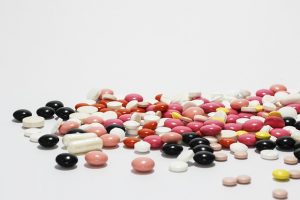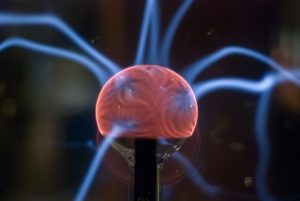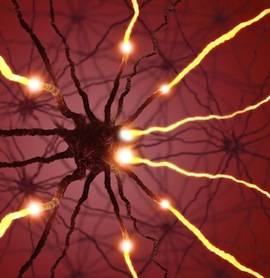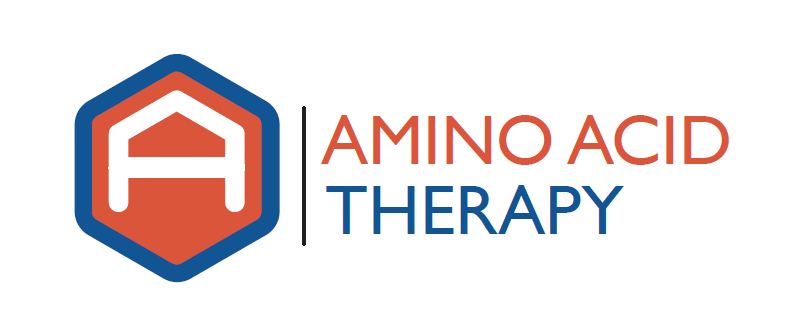by aatadmin | May 2, 2018 | Amino Acid Therapy, dopamine dominance, Neurotransmitters
 Many people suffer from histamine-induced allergies. This represents a collapse of the catecholamine cascade which results in the person’s system being overwhelmed with histamine. Amino acid therapy may present a novel approach to rebuilding the catecholamine system and restoring balance that can lessen and even eliminate histamine-induced allergies. (more…)
Many people suffer from histamine-induced allergies. This represents a collapse of the catecholamine cascade which results in the person’s system being overwhelmed with histamine. Amino acid therapy may present a novel approach to rebuilding the catecholamine system and restoring balance that can lessen and even eliminate histamine-induced allergies. (more…)
by aatadmin | Jan 17, 2018 | Amino Acid Therapy, Neurotransmitters, Parkinson's Disease, Symptoms of Neurotransmitter Imbalance
 Many people are on medications that alter, mimic or in some way manipulate neurotransmitter levels in the body. These include stimulants, such as amphetamines (i.e., methamphetamine, “speed”, Adderall, Vyvanse, Dexedrine), ecstasy (MDMA), cocaine, and methylphenidate (i.e., Ritalin, Concerta); norepinephrine-reuptake inhibitors (i.e., Strattera, Edronax); norepinephrine-dopamine reuptake inhibitors (i.e., Wellbutrin, Zyman); selective serotonin reuptake inhibitors (i.e., Paxil, Prozac, Zoloft, Celexa, Lexapro and Luvox); triptans (i.e., Imitrex, Maxalt, Amerge, Zomig); sleep aids (i.e., Ambien, Lunesta); barbiturates (i.e., phenobarbital, Fioricet); benzodiazepines (i.e., Xanax, Klonopin, Valium, Lorazepam); MAO inhibitors (i.e., Azilect, selegiline, Nardil, Morplan); COMT inhibitors (i.e., Comtan, Tasmar); and carbidopa/levodopa (i.e., Sinamet, Rytary, Stalevo). While these medications may exacerbate or cause neurotransmitter imbalances in the body, most can be safely used along with amino acid therapy to achieve optimal neurotransmitter function. (more…)
Many people are on medications that alter, mimic or in some way manipulate neurotransmitter levels in the body. These include stimulants, such as amphetamines (i.e., methamphetamine, “speed”, Adderall, Vyvanse, Dexedrine), ecstasy (MDMA), cocaine, and methylphenidate (i.e., Ritalin, Concerta); norepinephrine-reuptake inhibitors (i.e., Strattera, Edronax); norepinephrine-dopamine reuptake inhibitors (i.e., Wellbutrin, Zyman); selective serotonin reuptake inhibitors (i.e., Paxil, Prozac, Zoloft, Celexa, Lexapro and Luvox); triptans (i.e., Imitrex, Maxalt, Amerge, Zomig); sleep aids (i.e., Ambien, Lunesta); barbiturates (i.e., phenobarbital, Fioricet); benzodiazepines (i.e., Xanax, Klonopin, Valium, Lorazepam); MAO inhibitors (i.e., Azilect, selegiline, Nardil, Morplan); COMT inhibitors (i.e., Comtan, Tasmar); and carbidopa/levodopa (i.e., Sinamet, Rytary, Stalevo). While these medications may exacerbate or cause neurotransmitter imbalances in the body, most can be safely used along with amino acid therapy to achieve optimal neurotransmitter function. (more…)
by aatadmin | Dec 20, 2017 | Amino Acid Therapy, diabetes, Neurotransmitters, Symptoms of Neurotransmitter Imbalance

Close up of sugar and sweetener packets
Aspartame is a widely used artificial sweetener. Since its discovery in 1965, it has been used in thousands of food products as a non-caloric sweetener. Aspartame is about 200 times sweeter than sucrose (table sugar). However, aspartame is not the only artificial sweetener found in foods; others include saccharin, neotame, acesulfame potassium, and sucralose. More than 6000 new products that contain artificial sweeteners were launched in the United States between 1999 and 2004, including soft drinks, baby food, Pedialyte, frozen foods, chewing gum and many (many) foods aimed at weight loss and blood sugar management (see other posts on the effects of artificial sweeteners and blood sugar and weight gain). (more…)
by aatadmin | Dec 6, 2017 | Amino Acid Therapy, dopamine dominance, Neurotransmitters, Parkinson's Disease
 We get requests everyday from people looking for a practitioner in their area that uses amino acid therapy. The best place to start is to contact NeuroResearch at www.neurosupport.com and ask them if there is anyone near you that has taken a training with Marty Hinz, MD in your area; they have the most complete list of providers in the country and should be able to find someone you can contact. (more…)
We get requests everyday from people looking for a practitioner in their area that uses amino acid therapy. The best place to start is to contact NeuroResearch at www.neurosupport.com and ask them if there is anyone near you that has taken a training with Marty Hinz, MD in your area; they have the most complete list of providers in the country and should be able to find someone you can contact. (more…)
by aatadmin | Nov 22, 2017 | Amino Acid Therapy, dopamine dominance, Neurotransmitters, Symptoms of Neurotransmitter Imbalance
 Amino acid therapy involves the determination and administration of the amino acids and cofactors needed to optimize neurotransmitter function. In the vast majority of cases, this involves trying to optimize the function of the “centrally acting monoamines” which include serotonin, dopamine, norepinephrine and epinephrine. The centrally acting monoamines are synthesized from nutrients, including L-tryptophan, 5-HTP, L-tyrosine and L-dopa. These centrally acting monoamines form a system in which serotonin and the catecholamines (which include dopamine, norepinephrine and epinephrine) oppose one another; in other words, optimizing the function of the centrally acting monoamines involves more than just giving ‘more’ of one precursor or the other; it also involves getting the balance right between them. (more…)
Amino acid therapy involves the determination and administration of the amino acids and cofactors needed to optimize neurotransmitter function. In the vast majority of cases, this involves trying to optimize the function of the “centrally acting monoamines” which include serotonin, dopamine, norepinephrine and epinephrine. The centrally acting monoamines are synthesized from nutrients, including L-tryptophan, 5-HTP, L-tyrosine and L-dopa. These centrally acting monoamines form a system in which serotonin and the catecholamines (which include dopamine, norepinephrine and epinephrine) oppose one another; in other words, optimizing the function of the centrally acting monoamines involves more than just giving ‘more’ of one precursor or the other; it also involves getting the balance right between them. (more…)
by aatadmin | Oct 25, 2017 | Amino Acid Therapy, Neurotransmitters, Symptoms of Neurotransmitter Imbalance
 There is a lot of confusion about what we are trying to accomplish through the targeted use of amino acid therapy, so I wanted to devote this post to (a) the dysfunction(s) we are trying to address and (b) how amino acid therapy addresses these dysfunctions. (more…)
There is a lot of confusion about what we are trying to accomplish through the targeted use of amino acid therapy, so I wanted to devote this post to (a) the dysfunction(s) we are trying to address and (b) how amino acid therapy addresses these dysfunctions. (more…)
 Many people suffer from histamine-induced allergies. This represents a collapse of the catecholamine cascade which results in the person’s system being overwhelmed with histamine. Amino acid therapy may present a novel approach to rebuilding the catecholamine system and restoring balance that can lessen and even eliminate histamine-induced allergies. (more…)
Many people suffer from histamine-induced allergies. This represents a collapse of the catecholamine cascade which results in the person’s system being overwhelmed with histamine. Amino acid therapy may present a novel approach to rebuilding the catecholamine system and restoring balance that can lessen and even eliminate histamine-induced allergies. (more…)
 Many people are on medications that alter, mimic or in some way manipulate neurotransmitter levels in the body. These include stimulants, such as amphetamines (i.e., methamphetamine, “speed”, Adderall, Vyvanse, Dexedrine), ecstasy (MDMA), cocaine, and methylphenidate (i.e., Ritalin, Concerta); norepinephrine-reuptake inhibitors (i.e., Strattera, Edronax); norepinephrine-dopamine reuptake inhibitors (i.e., Wellbutrin, Zyman); selective serotonin reuptake inhibitors (i.e., Paxil, Prozac, Zoloft, Celexa, Lexapro and Luvox); triptans (i.e., Imitrex, Maxalt, Amerge, Zomig); sleep aids (i.e., Ambien, Lunesta); barbiturates (i.e., phenobarbital, Fioricet); benzodiazepines (i.e., Xanax, Klonopin, Valium, Lorazepam); MAO inhibitors (i.e., Azilect, selegiline, Nardil, Morplan); COMT inhibitors (i.e., Comtan, Tasmar); and carbidopa/levodopa (i.e., Sinamet, Rytary, Stalevo). While
Many people are on medications that alter, mimic or in some way manipulate neurotransmitter levels in the body. These include stimulants, such as amphetamines (i.e., methamphetamine, “speed”, Adderall, Vyvanse, Dexedrine), ecstasy (MDMA), cocaine, and methylphenidate (i.e., Ritalin, Concerta); norepinephrine-reuptake inhibitors (i.e., Strattera, Edronax); norepinephrine-dopamine reuptake inhibitors (i.e., Wellbutrin, Zyman); selective serotonin reuptake inhibitors (i.e., Paxil, Prozac, Zoloft, Celexa, Lexapro and Luvox); triptans (i.e., Imitrex, Maxalt, Amerge, Zomig); sleep aids (i.e., Ambien, Lunesta); barbiturates (i.e., phenobarbital, Fioricet); benzodiazepines (i.e., Xanax, Klonopin, Valium, Lorazepam); MAO inhibitors (i.e., Azilect, selegiline, Nardil, Morplan); COMT inhibitors (i.e., Comtan, Tasmar); and carbidopa/levodopa (i.e., Sinamet, Rytary, Stalevo). While 
 We get requests everyday from people looking for a practitioner in their area that uses amino acid therapy. The best place to start is to contact NeuroResearch at
We get requests everyday from people looking for a practitioner in their area that uses amino acid therapy. The best place to start is to contact NeuroResearch at  Amino acid therapy involves the determination and administration of the amino acids and cofactors needed to optimize neurotransmitter function. In the vast majority of cases, this involves trying to optimize the function of the “centrally acting monoamines” which include serotonin, dopamine, norepinephrine and epinephrine. The centrally acting monoamines are synthesized from nutrients, including
Amino acid therapy involves the determination and administration of the amino acids and cofactors needed to optimize neurotransmitter function. In the vast majority of cases, this involves trying to optimize the function of the “centrally acting monoamines” which include serotonin, dopamine, norepinephrine and epinephrine. The centrally acting monoamines are synthesized from nutrients, including  There is a lot of confusion about what we are trying to accomplish through the targeted use of amino acid therapy, so I wanted to devote this post to (a) the dysfunction(s) we are trying to address and (b) how amino acid therapy addresses these dysfunctions.
There is a lot of confusion about what we are trying to accomplish through the targeted use of amino acid therapy, so I wanted to devote this post to (a) the dysfunction(s) we are trying to address and (b) how amino acid therapy addresses these dysfunctions. 